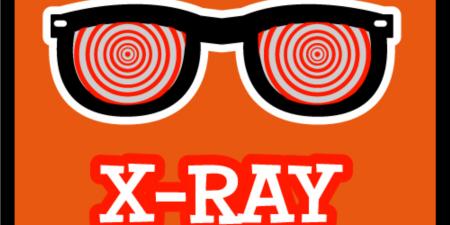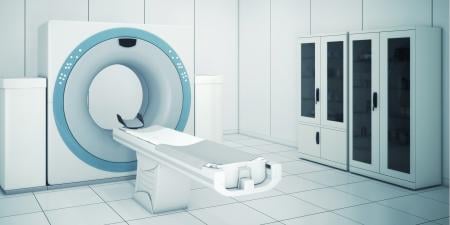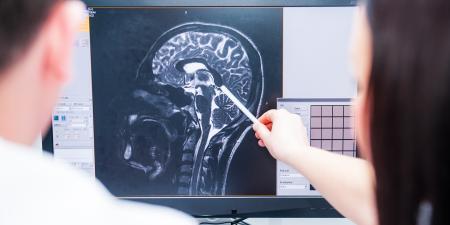These are good times for radiology residencies across the country. Highly motivated, enthusiastic medical students are selecting radiology residencies in record numbers, and the trend is likely to continue for some time.
Among the key reasons for this increased interest and radiology's desirability are expansion of the field through a constant stream of new diagnostic and treatment techniques and molecular imaging developments and its integration of nonmedical sciences such as statistics and physics.
As the field expands with increasing speed, residency programs are challenged to train new doctors in both its fundamentals and frontier technology. I have always thought that there are two avenues of teaching in any residency. The first is the formal, school-based approach that encompasses didactic lectures, courses, grand rounds, hospital-based training, and board exams. The second avenue is apprenticeship: students observing the expert to acquire and advance their mastery of a given task. These two learning approaches go hand in hand. Residents must read scholarly papers and medical textbooks regularly, but it takes the masters (teaching faculty and fellows) to bring the material that residents study to life by challenging them, highlighting weak points in their knowledge, and stimulating them with topic-specific cases and hypothetical situations.
The Formal Curriculum
Beyond the advances specific to radiology, subject areas such as statistics, physics, ethics, research, and radiology-pathology must be worked into the expanded curriculum as well as time for morbidity-mortality conferences. Given the changes in radiology and the complementary topics that today's residents must master, how can we achieve a more inclusive, progressive, up-to-date curriculum? The solutions will come at individual residency, regional, and national levels. National accreditation (ACGME) and supporting organizations (American Board of Radiology, Associations of Program Directors in Radiology) recognize the need for developing standard training in radiology and are developing competencies that the curricula in all programs must address.
Complementary sessions and training in these new competencies can be organized at the city or regional level to enhance educational exchange and to share resources for a more extensive educational network. For radiology residents in the greater Boston area, for example, regional educational seminars known as the New England Roentgen Ray Society Meetings are offered once a month during the winter. These lectures and pertinent case discussions have always been well received by the residents. Institutions with more than one residency program can arrange institution-wide, non-specialty-based seminars and programs for all trainees in topic areas such as statistics, medicolegal issues, ethics, and harassment policies, for example. Such collaborations have the obvious advantage of reducing the cost of the offering to each residency department.
As more hospitals hire fellowship-trained radiologists, we can expect material related to evolving subspecialties such as neurological, musculoskeletal, and cardiovascular radiology to be well represented. At the same time, attending physicians who are passionate about the less-popular topics like statistics, research, or ethics, are needed; these subjects are pertinent to every doctor, every year. And the physicians who teach them are true educational companions for the residency directors, enhancing the value of the program through their commitment and dedication to new physicians. Attending physicians understand the large knowledge base residents must acquire and the long hours, stressful calls, and personality conflicts they go through. Their experience and mentoring is especially meaningful to junior residents, whom they often help through personal situations. Remember that these residents are, for the most part, young doctors, many of them choosing to start families along with their new careers. Programs are competing for attention with these life-changing events and attempting to inspire the trainees about radiology.
Apprenticeship and Values
The opportunities for the apprenticeship approach to complement the formal curriculum are obvious. Interestingly, apprenticeship learning appears to have evolved on its own without much opposition. Take the example of ethics. The study and application of ethics prepares us to be thoughtful, respectful, dignified people who can work well with others. For doctors, it means internalizing the professional principles of putting our patients' well-being ahead of all else, of respecting their privacy and their rights, and steadfastly maintaining their confidentiality.
Most people acquire a basic sense of right and wrong, respect for others, and the importance of sharing in their homes during childhood. These concepts are reinforced throughout one's schooling, and other dimensions of ethical conduct—timeliness, duty, helpfulness, and being a team player—are added along the way. Residency programs can be viewed as family nests that nurture values. Still, most people arrive at the residency nest well after they have acquired and developed personal values, and further molding or relearning may not be an easy task. Couple this with the fact that today's ethics training includes many ideas about cultural diversity and tolerance of difference—understanding of harassment and sexual orientation for example—about which this generation of residents may have formed strong opinions. While a gentle tap of "hello" on someone's shoulder may be considered a routine way of welcoming in some cultures, for others this behavior may fall into the sexual harassment category. While some cultural sensitivity information can be delivered in the classroom setting, by and large it has to be seen and lived to be understood. The trainees must be open to new values being added and old values being refined in this new family nest. The masters must be patient but attentive to their pupils and willing to engage them.
The 360-Degree Apprenticeship
Residents are the window of connection to the outside world; new ones coming every year are refreshments. Many trainees arrive with extraordinary human qualities. These unique people are gifts in the truest sense. They not only serve as role models for their classmates, but they influence and remodel the masters themselves. It is quite all right, therefore, for us—the teachers—to be open-minded and welcome these people and consider their suggestions.
While taking notes during an interview, I always asked the residency applicants to give me three of their most important character traits. Among the various traits they mentioned, one would grab my attention more than any other: team player. I would highlight and put this in capital letters when the applicant mentioned it. There will always be emergencies, family-related unexpected events interrupting people's lives. Residents are not exempt from these. There is nothing more valuable to the program director than getting a volunteer to cover an unexpected absence without questioning the situation. For me that volunteer is the true team player.
Solutions to creating a balance between formal training and apprenticeship in any residency will also come from the norms and the location of the individual program, its support structure, and, more importantly, how openly the members of the department and the residency staff discuss these matters with each other. To succeed, a program must enjoy maximum participation and dedication from everybody involved. It can be defined simply as a team sport.



